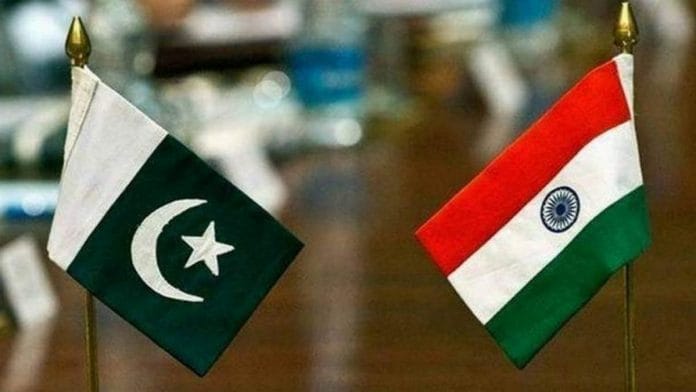New Delhi: A senior official from National Security Advisor (NSA) Ajit Doval’s office and the Research and Analysis Wing (R&AW) exchanged messages with officials of Pakistan’s Inter-Services Intelligence (ISI) through two foreign journalists — Adrian Levy and Cathy Scott-Clark — in the 2018-19 period, a new book written by the duo has claimed.
According to the book, back-channel talks also took place following the Pulwama attack in February 2019 that killed about 40 CRPF personnel.
The book claims that ISI officials distanced themselves from the attack, saying it was planned in Afghanistan. They also denied the Indian charges that the suicide bomber, Adil Dar, a Kashmiri, was “launched from Pakistan”.
The book, Spy Stories: Inside the Secret World of The R.A.W (R&AW) and I.S.I, which is releasing this week, claims that Indian agencies did not believe the Pakistani messages and maintained that the Jaish-e-Mohammed, allegedly backed by Islamabad, had “armed Dar” and so was responsible for the attack.
The journalists have also written that Islamabad reiterated that carrying out such an attack would “push Pakistan over the edge — from greylist to blacklist in at the Financial Action Task Force (F.A.T.F.) in Paris” and cited “blacklisting, as one forceful reason for Pakistan having no direct involvement”. Indian agencies, though, did not believe them.
The journalists claim they had conversations with Lt Gen. Nusrat Naeem, the ISI’s former C-Wing chief; former RAW chief Rajinder Khanna, who is now a deputy NSA, and military defence official Lt Gen. Vinod Khandare.
The book states that Pakistan maintained it had nothing to do with the Jaish.
Referring to an exchange, the journalists have written that while they were on a call, messages arrived from “an I.S.I. officer in its A-Wing, the analysis section, that stressed that Jaish remained an I.S.I. target and was on its ‘kill list’”.
“We read one of these out to Khandare: ‘For the last sixteen years, after Jaish tried to repeatedly kill Musharraf and many other officers, the ISI has been hunting down its fighters and striking them. They are in our crosshairs – do not forget,” it claims.
Khandare, however, disagreed, the book claims.
“You know, terror has no reason or season,” the book quotes Khandare as having said. “Plans are seeded and then gestate. They go off like rockets on short fuses. Do not judge an atrocity by its timing. Judge Pakistan on its record. Pulwama bomber Adil Dar was a Kashmiri. True. But he was in the thrall of an outfit that has its bases inside Pakistan…”
According to the authors, NSA Ajit Doval “assured them” that a report on Pulwama was coming, and it “would lay bare” the ISI’s involvement.
According to the authors, India then carried out the Balakot air strikes, which Doval reportedly said was “pivotal for India”.
“What really matters is the operation itself, that India has changed its strategic calculations,” Doval is quoted as having said.
‘Dirty cops’
Talking about the 2016 Pathankot airbase attack in which seven security personnel were killed, the authors claim that “corrupt local police officers were suspected of scouting the airbase”.
“Jaish had paid for the 350 kilos of explosives but they had been procured in India and the haul was waiting for the raiding party on the Indian side,” the book claims. “Indian allies, including corrupt local police officers, were suspected of scouting the airbase.”
According to the authors, one “dirty” cop had found an area where there were “multiple vulnerabilities: the floodlights were down, and the C.C.T.V. cameras had no coverage. There was no surveillance equipment of any kind and a large tree grew beside the perimeter wall that one written report identified as a security hazard.”
According to the authors, an Intelligence Bureau (IB) officer also told them that the police officer or one of his collaborators had “climbed up and attached a rope”.
“The raiders had used it to heave over 50 kilos of ammunition, and 30 kilos of grenades, mortars, and AK-47s,” the IB officer is quoted as having said.
The book also says that several key pieces of protection were “missing”, “despite constant warnings”.
“More than 91 kilometres of the Punjab border was not fenced. At least four reports had suggested that rivers (and dry creaks) were vulnerable spots, but no nets were pegged across them,” the authors quoted a BSF officer as having told them. “There were no extra patrols, despite six written requests. Surveillance technology and movement trackers had not been deployed. The B.S.F. was thin on the ground because it concentrated its activities in Kashmir, and its requests for more men had been ignored, repeatedly.”
(Edited by Arun Prashanth)
Also read: Joe Biden hasn’t called Imran Khan yet. Pakistan NSA says Islamabad ‘has options’






